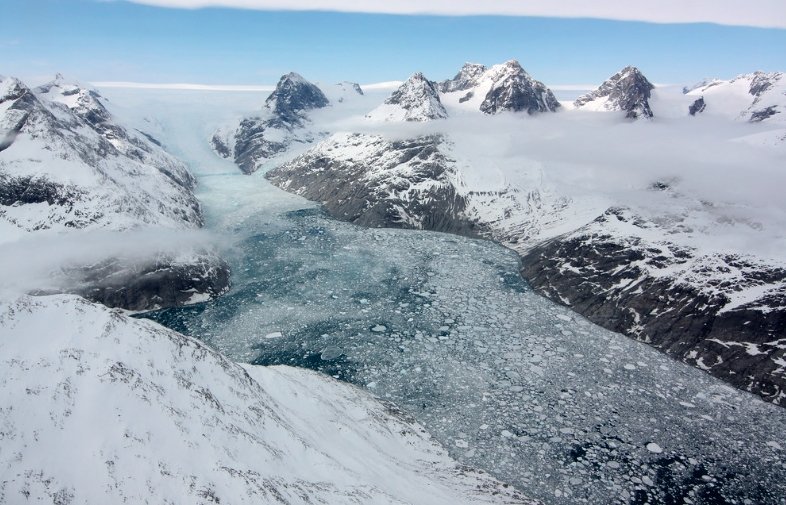The Greenland Ice Sheet is losing more ice mass than previously estimated, according to a new study that used satellite data to measure the retreat of glaciers around the island. The study found that the ice sheet lost about one trillion tons of ice from 1985 to 2022, mostly from below sea level, where the icebergs did not contribute to sea level rise directly. However, the glacial retreat could have implications for the ocean circulation and the climate in the future.
Satellite Data Reveals Glacial Retreat
The study, published in the journal Nature on Jan. 17, 2024, used artificial intelligence techniques to analyze nearly a quarter million pieces of satellite data on glacier positions from 1985 to 2022. The researchers, led by Chad Greene, a glacier scientist at NASA’s Jet Propulsion Laboratory in Southern California, mapped the changes in the length of 207 glaciers around the entire ice sheet. They found that 179 glaciers retreated significantly, 27 held steady, and one advanced slightlyThe total area lost by the ice sheet was about 5,000 square kilometers, equivalent to a trillion tons of ice.
The satellite data used in the study included images from the Landsat program, a joint effort of NASA and the U.S. Geological Survey, and the Sentinel-2 mission, a collaboration of the European Space Agency and the European Union. The researchers used machine learning algorithms to automatically detect the end positions of the glaciers every month, at a resolution of 120 meters. This enabled them to capture the variability and seasonality of the glacial retreat, as well as the long-term trends.
Ice Loss Below Sea Level
Most of the ice loss came from the glaciers that terminate below sea level, in the deep fjords along the coast of Greenland. These glaciers are exposed to warm ocean water that melts and erodes the ice from below, causing the glaciers to thin and retreat. The icebergs that break off from these glaciers do not add to sea level rise directly, because they displace the same amount of water as their volume. However, the loss of ice below sea level could have indirect effects on sea level rise, by accelerating the flow of ice from higher elevations.

“When the ice at the end of a glacier calves and retreats, it’s like pulling the plug out of the fjord, which lets ice drain into the ocean faster,” Greene said. The researchers estimated that the ice loss below sea level accounted for about 20% of the total ice mass loss from the Greenland Ice Sheet since 1985, which was not captured by previous methods that measured the height or the weight of the ice sheet. These methods are good at determining the losses that end up in the ocean and drive up sea level, but they cannot account for the retreat of glaciers that already lie mostly below sea level.
Implications for Ocean Circulation and Climate
The ice loss below sea level could also have implications for the ocean circulation and the climate in the future. The freshwater that pours into the North Atlantic from the melting glaciers could affect the density and salinity of the seawater, which are important factors for the Atlantic meridional overturning circulation (AMOC). The AMOC is a system of ocean currents that transports heat and nutrients across the Atlantic, influencing the climate and the marine ecosystems of the regionSome scientists are concerned that the influx of freshwater from Greenland could weaken or disrupt the AMOC, with severe consequences for humanity.
The AMOC was already known to be at its weakest in 1,600 years and in 2021 researchers spotted warning signs of a tipping point. A recent study suggested the collapse could happen as soon as 2025 in the worst-case scenario. A significant part of the Greenland Ice Sheet itself is also thought by scientists to be close to a tipping point of irreversible melting, with ice equivalent to 1-2 meters of sea level rise probably already expected.
The study by Greene and his colleagues adds to the growing evidence of the vulnerability of the Greenland Ice Sheet to the climate crisis, and the urgency of reducing greenhouse gas emissions to limit the global warming. The researchers hope that their satellite data analysis could help improve the models and projections of the ice sheet behavior and its impact on the sea level and the ocean circulation.














